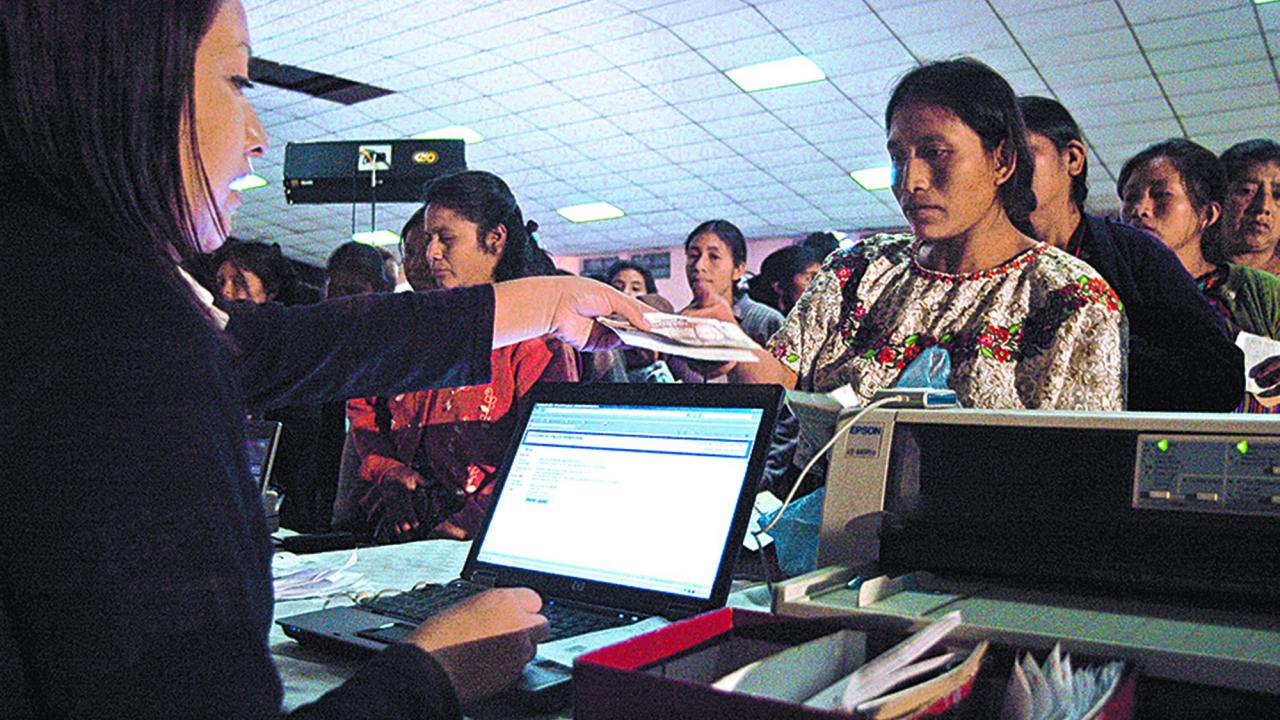
The decline would end the 10-year cycle of consecutive growth in remittance flows that began in 2014, when Mexican emigrants sent US$24.401 billion back to their countries of origin.
The flow of remittances to Mexico could decline by between 1.3 and 3% compared to the figures observed in 2024, as a result of the deportation of immigrants from the United States, according to Jesús Cervantes González, head of the Economic Statistics Department and the Latin American Remittance Forum of the Center for Latin American Monetary Studies (Cemla).
Participating in Banorte's institutional podcast, Cervantes González noted that in either case, "it would be a fairly comparable effect" that doesn't include the decreasing arrival of so-called migrants in transit.
The aforementioned forecasts are the result of two scenarios: the first, in which the United States deports 200,000 undocumented Mexican migrants, would result in a 1.3% drop in remittance transfers.
And another scenario involves the deportation of 300,000 undocumented Mexican migrants, under which the flow of remittances would be reduced by up to 3%.
As González Cervantes explained, this decline will close the 10-year cycle of consecutive growth in remittance flows that began in 2014, when Mexican emigrants sent US$24.401 billion back to their countries of origin.
By the end of 2024, displaced Mexicans had sent remittances totaling US$64.746 billion, nearly tripling their total.
The peak of growth in remittance flows to Mexico occurred in 2021, when they increased by 25.9% annually.
Cemla integrates programs to improve information on remittances as a crucial tool for the knowledge of the region's central banks.
FIRST QUARTER, OCCUPANCY PLACES IN THE UNITED STATES DECLINE
CEMLA had previously presented a report showing that the number of jobs for Mexican workers in the United States decreased during the first two months of this year, although they noted that there is no conclusive data.
That is, there is no evidence to conclude whether this reduction in job positions was due to immigrants' fear of being deported or whether there was less demand for Mexican labor in the United States.
The pattern of remittances between January and February is not yet known, as the most recent data on remittances is from the first month of the year, when US$4.66 billion was received by the 4.9 million recipient households in Mexico.
This inflow of foreign currency in January showed a 1.9% increase compared to the flow received in the same month last year, but presents a further sequential decline, that is, compared to the monthly flow in December, of 10.8%.
According to central bank statistics, remittances received by 11.9 million households totaled US$5.222 billion in the last month of last year.
CHIAPAS, MIGRATION SENSOR IN TRANSIT
The expert clarified that migrants in transit helped increase the flow of remittances to Mexico and peaked in December 2023. But the arrival of people en route to the United States has possibly been inhibited, he emphasized.
Cervantes González explained separately to El Economista that there is no data on migrants in transit or the remittances associated with them.
This migration has seen a sharp increase in recent years, and part of Chiapas' remittance income includes remittances associated with migration in transit.
In 2024, remittance income from Chiapas fell 4.6%, from US$4.367 billion in 2023 to US$4.168 billion in 2024.
"The Bank of Mexico will release remittance data by state for the first quarter of 2025 in early May, and the figures for Chiapas should show a decline."
Information from the remittance industry indicated that the peak of remittances associated with transit migration occurred in late 2023.
“The slowdown in remittances that occurred in 2024 was due in part to the slowdown in transit migration. The possibility that deportations could negatively impact remittances is independent of any effect on remittance income associated with the sharp decline in transit migration in 2025.”
When a migrant from another country entered Chiapas to cross Mexican territory, he would ask his relative abroad to send him remittances for his expenses in Mexico on his way to the United States.
Information on remittances received in Mexico in February 2025 will be released by the central bank on April 1.










